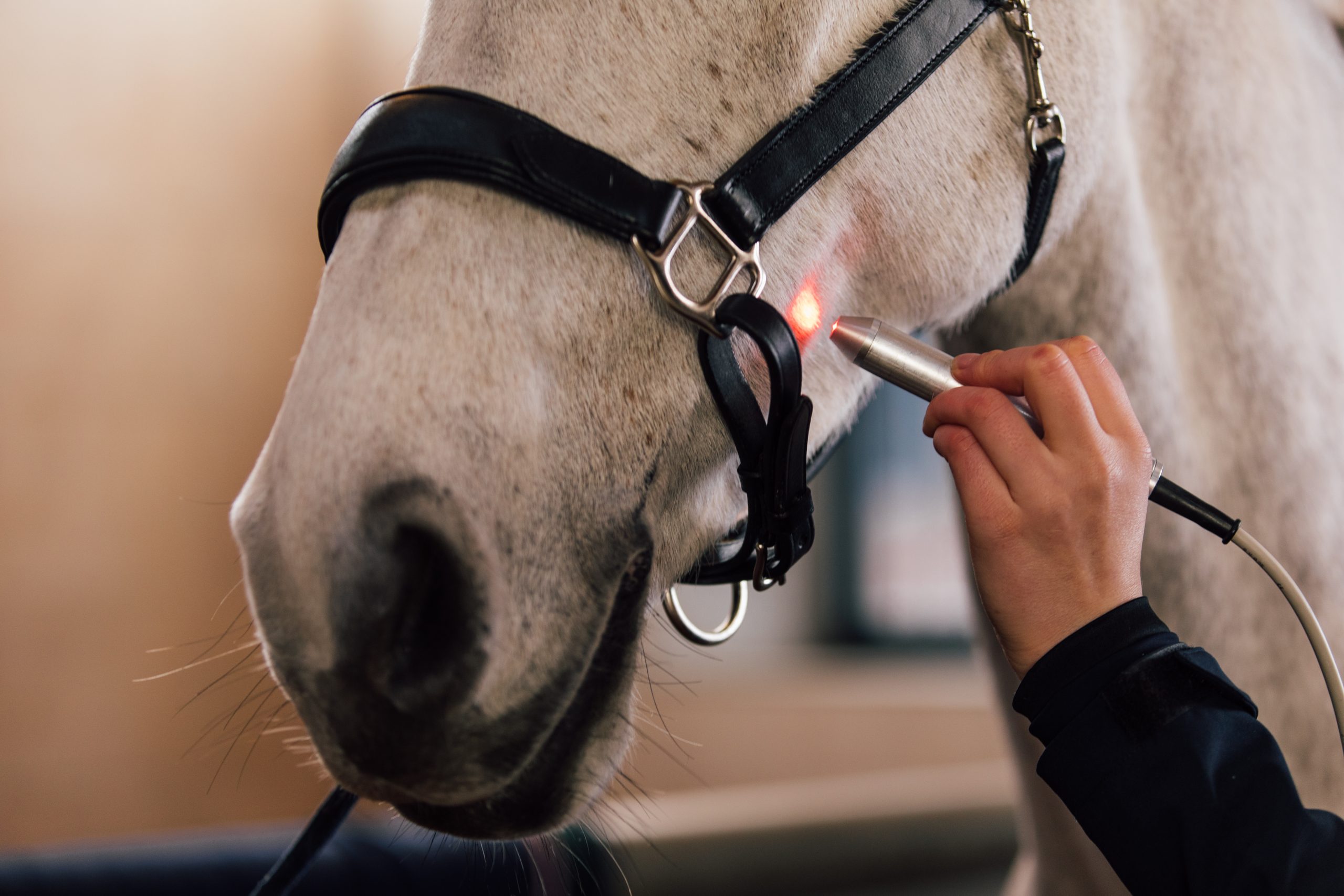Evaluating the Performance of Laser Therapy in Horse Treatment for Injury Recovery
The examination of laser treatment's performance in equine injury rehabilitation hinges on several elements, including recovery time, pain mitigation, and tissue regrowth. Vets regularly observe superior results with laser therapy contrasted to conventional methods, positioning it as an important aspect in equine treatment. Equine Therapy.

Recognizing Laser Treatment
Laser treatment has actually ended up being an essential tool in veterinary medicine, particularly in the treatment of equine problems. Recognized for its non-invasive nature and efficiency, laser treatment includes the application of particular wavelengths of light to stimulate tissue repair and lower swelling. This restorative technique is progressively favored for its capacity to increase the recovery process in horses suffering from a selection of bone and joint injuries and chronic conditions.
The key device behind laser therapy is its ability to enhance mobile functions. When laser light penetrates the skin, it is soaked up by mitochondria, the powerhouse of cells, which leads to increased manufacturing of adenosine triphosphate (ATP) This biochemical energy increase promotes cellular repair and regrowth. Furthermore, laser therapy advertises vasodilation, improving blood circulation and oxygen shipment to damaged cells, thus expediting recuperation.
In equine medicine, laser therapy is particularly advantageous for problems such as tendonitis, osteoarthritis, and injury healing. The method is admired for its pain-relieving properties, enabling steeds to restore flexibility and function extra rapidly. Vets additionally appreciate its very little side effects compared to various other therapy modalities, making it a trusted and safe choice for equine treatment.
How Laser Therapy Functions
To understand how laser treatment functions, it is important to look into the communication between light energy and organic cells. Laser treatment, also understood as Low-Level Laser Treatment (LLLT) or photobiomodulation, uses specific wavelengths of light to penetrate cells and boost mobile procedures. The mechanism rests on the absorption of photons by cell chromophores, mainly within the mitochondria, which are important for power manufacturing.
Upon absorption, these photons trigger a series of biochemical modifications, improving mitochondrial feature and bring about raised adenosine triphosphate (ATP) production. This rise in ATP accelerates cellular metabolism, promoting tissue repair work and regeneration. Furthermore, laser therapy modulates inflammatory reactions by impacting cytokine levels and decreasing oxidative anxiety, consequently easing discomfort and swelling.
Another significant facet of laser therapy is its role in boosting microcirculation. The treatment promotes vasodilation, improving blood circulation and oxygen shipment to damaged cells. This helps with the elimination of mobile debris and sustains the expansion of fibroblasts and collagen synthesis, essential for injury healing.
Clinical Proof
The efficacy of laser treatment in equine therapy has been validated with numerous medical research studies, showcasing its healing potential across a variety of problems. A research conducted by Turner et al. (2012) demonstrated that equines treated with low-level laser treatment (LLLT) for ligament injuries showed accelerated healing compared to those getting standard treatments.
Likewise, study by Johnson and coworkers (2015) focused on equine muscular tissue injuries, exposing that laser treatment substantially quickened muscular tissue fiber regeneration and lowered muscular tissue tightness. Clinical analyses have actually shown that laser treatment can minimize chronic problems such as osteoarthritis.
Vet Insights
Veterinary experts have actually increasingly acknowledged the worth of laser therapy in equine treatment, pointing out both empirical proof and firsthand experience. Dr. Jane Smith, a leading equine veterinarian, dig this keeps in mind that laser treatment has revealed impressive efficacy in minimizing swelling and accelerating tissue fixing.
Veterinarians also appreciate the flexibility of laser therapy. She directs out that laser therapy can be tailored news to the particular requirements of each equine, guaranteeing ideal results.

Practical Factors To Consider
An essential aspect of applying laser therapy in equine treatment entails comprehending the practical factors to consider that ensure its efficacy and safety and security. Most importantly, it is essential to select the proper laser device, as various kinds differ in wavelength, power, and infiltration depth. Vets should be fluent in these specifications to customize therapy protocols properly to each injury kind
Moreover, the regularity and period of laser therapy sessions require careful preparation to make the most of healing benefits while lessening any prospective damaging effects. Constant monitoring of the equine's feedback to treatment can assist essential adjustments in the treatment routine. Establishing a risk-free and regulated environment during treatments is also crucial to stop accidental direct exposure to laser emissions, which can hurt both the horse and the trainer.
Educating and qualification of employees providing laser treatment are vital to make sure correct technique and to support security criteria. In great post to read addition, maintaining accurate records of each session, including laser settings and observed results, is crucial for examining the total performance of the therapy and for making data-driven choices.
Verdict
Laser therapy has actually arised as an effective modality in equine injury recovery, using substantial advantages in healing time, pain alleviation, and cells healing. For optimum outcomes, continuous surveillance and personalized treatment methods stay essential in leveraging the complete capacity of laser treatment in equine care.